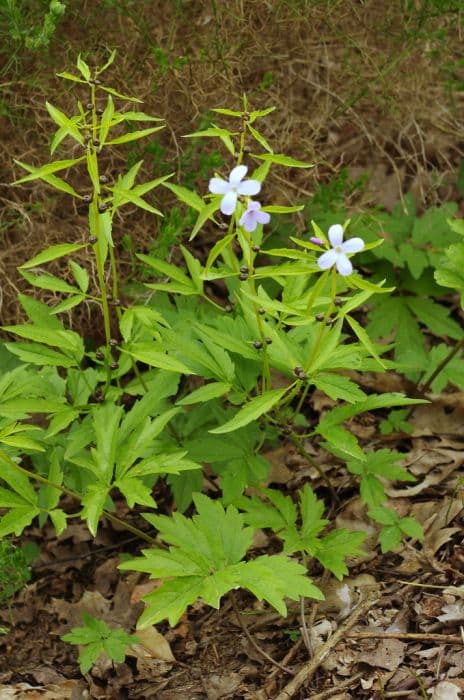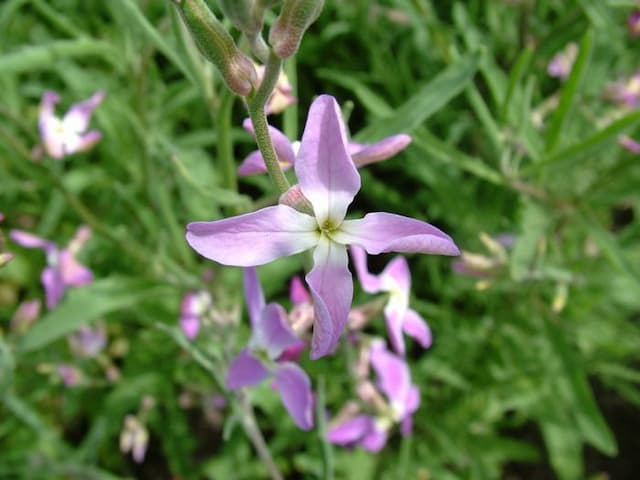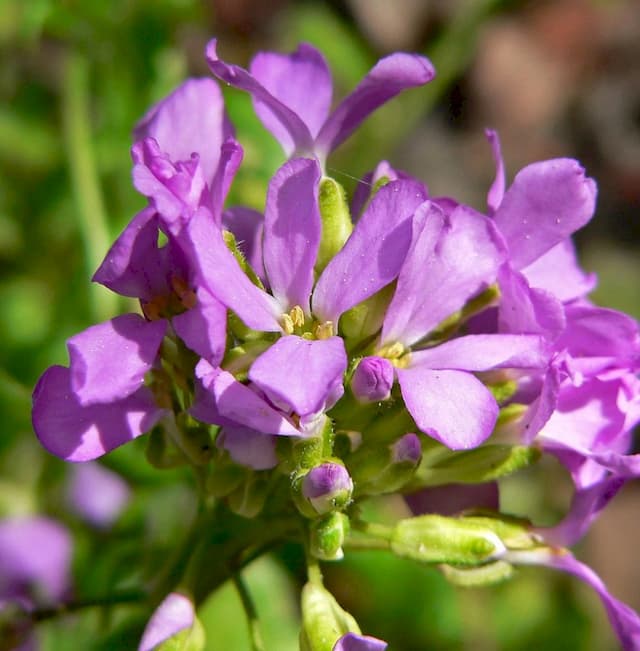Brussels sprout 'Igor' Brassica oleracea (Gemmifera Group) 'Igor'

ABOUT
'Igor' is a mid- to late season cultivar producing smooth, dark green sprouts that are uniform in shape and size along the length of the sturdy stem that reaches up to 80cm tall
About this plant
 Names
NamesSynonyms
Brussels Sprouts.
Common names
Brassica oleracea var. gemmifera.
 Characteristics
CharacteristicsLife cycle
Biennials
Foliage type
Deciduous
Color of leaves
Green
Flower color
Yellow
Height
2 feet [60 cm]
Spread
2 feet [60 cm]
Plant type
Herb
Hardiness zones
3-9
Native area
Europe
Benefits
 General Benefits
General Benefits- Nutrition: A rich source of vitamins C and K, fiber, and antioxidants.
- Culinary Versatility: Can be prepared in various ways, including steaming, roasting, and sautéing.
- Cold Resistance: Hardy in cold weather, making it suitable for fall and winter harvests.
- Decorative Appearance: Striking visual addition to the garden with its compact, leafy green sprouts.
- Space Efficiency: Suitable for growing in limited space due to its vertical stalk.
- Companion Planting: Compatible with a variety of other plants, aiding in pest control and space use.
- Suitability for Fermentation: Can be used to make traditional fermented foods like kimchi.
- Seasonal Appeal: Offers fresh produce during the times when other vegetables may be out of season.
- Soil Health: Deep roots can help improve soil structure and fertility over time.
- Biodiversity: Supports agricultural diversity by providing an alternative to more common vegetables.
 Medical Properties
Medical Properties- Antioxidant content: Brussels sprouts are known to be high in antioxidants, which can help in protecting the cells from damage caused by free radicals.
- Vitamin C source: With high levels of Vitamin C, Brussels sprouts support the immune system and may contribute to skin health and wound healing.
- High in fiber: The fiber content in Brussels sprouts can aid digestion and prevent constipation.
- Vitamin K content: The high levels of Vitamin K found in Brussels sprouts are essential for bone health and blood clotting.
- Anti-inflammatory properties: Brussels sprouts contain compounds that may help reduce inflammation in the body.
- Glucosinolates: These are sulfur-containing compounds found in Brussels sprouts that may have cancer-preventive properties.
- Rich in minerals: Brussels sprouts provide minerals such as potassium, which is important for heart health and proper muscle and nerve function.
 Air-purifying Qualities
Air-purifying QualitiesThis plant is not specifically known for air purifying qualities.
 Other Uses
Other Uses- Edible Displays: The leaves and miniature cabbages of Brussels sprouts 'Igor' can be arranged to create visually stunning edible centerpieces for a table setting or buffet.
- Companion Planting: Brussels sprouts 'Igor' can be planted alongside other crops to deter certain pests, making it a natural form of pest control in the vegetable garden.
- Educational Projects: The distinct growth pattern of Brussels sprouts 'Igor' can be used in school projects to teach children about plant development and life cycles.
- Garden Sculpture: By carefully pruning and training the plant, Brussels sprouts 'Igor' can be grown into unique shapes, adding an artistic touch to vegetable gardens.
- Livestock Feed: The leaves of Brussels sprouts 'Igor' can be used as nutritious feed for livestock animals, particularly for small-scale or hobby farms.
- Dye Source: The leaves of Brussels sprouts 'Igor' can be used to produce natural dyes for fabrics or craft projects.
- Natural Fertilizer: The excess leaves and plant matter of Brussels sprouts 'Igor' can be composted to enrich the soil as a natural fertilizer.
- Photography Subject: With its unique appearance, Brussels sprouts 'Igor' can be a captivating subject for photographers specializing in botanical or food photography.
- Wind Barriers: Taller varieties of Brussels sprouts 'Igor' can be planted in rows to create wind barriers in gardens, protecting other plants from strong winds.
- Cooking Workshops: Brussels sprouts 'Igor' can be used in cooking classes to educate people on how to prepare and cook the vegetable in various ways.
Interesting Facts
 Feng Shui
Feng ShuiThe Brussels sprouts is not used in Feng Shui practice.
 Zodiac Sign Compitability
Zodiac Sign CompitabilityThe Brussels sprouts is not used in astrology practice.
 Plant Symbolism
Plant Symbolism- Resilience: Brassica oleracea 'Igor', commonly known as Brussels sprouts, is known for its hardiness and ability to thrive in cooler temperatures, symbolizing perseverance and resilience.
- Nourishment: As a nutrient-rich vegetable, Brussels sprouts symbolize physical and emotional nourishment, suggesting a grounded, supportive presence.
- New Beginnings: Associated with winter and early spring, Brussels sprouts can signify fresh starts, aligning with the idea of new growth and opportunities.
- Healing: Due to their high vitamin content and health benefits, Brussels sprouts can represent healing and the restoration of balance and well-being.
 Water
WaterBrussels sprouts 'Igor' should be watered thoroughly once the soil’s surface begins to feel dry, usually every few days during the growing season. Depending on weather conditions, this can vary; hot, dry spells may require watering every other day, while cooler, rainy periods might warrant less frequent watering. An approximate guideline is to provide about 1 to 1.5 inches of water per week, either through rainfall or manual watering. During watering, it's important to avoid wetting the foliage to reduce the risk of disease, instead aiming the water directly at the soil around the base of the plant. It is essential to ensure that the soil is well-draining to prevent waterlogging, which can cause root rot.
 Light
LightFor optimal growth, Brussels sprouts 'Igor' require full sun, meaning at least 6 hours of direct sunlight per day. It is best positioned in a spot where it can receive uninterrupted sunlight throughout the day. While it can tolerate partial shade, the amount and quality of the sprouts produced may diminish.
 Temperature
TemperatureBrussels sprouts 'Igor' thrive in cooler temperatures and can tolerate a range down to about 20°F, but they prefer a growing environment with temperatures between 60°F and 65°F for optimal development. They can survive a brief period of temperatures as high as 75°F, but sustained heat may result in reduced quality and yield of the sprouts.
 Pruning
PruningBrussels sprouts 'Igor' should be pruned to encourage the development of the sprouts along the stem. Pruning involves removing the lower leaves of the plant, especially those that turn yellow or begin to wilt, which allows the plant to focus its energy on growing the sprouts above. The best time to prune is in late summer or early fall, as the sprouts start to form along the stem.
 Cleaning
CleaningAs needed
 Soil
SoilBrussels sprouts 'Igor' require well-draining soil with significant organic matter. A soil mix of peat, compost, and perlite or vermiculite in equal parts is optimal. The soil pH should be between 6.0 and 7.0 for the best growth.
 Repotting
RepottingBrussels sprouts 'Igor' are not commonly grown as potted plants and typically do not require repotting. They are usually sown directly into the ground or into seedling trays before being transplanted outdoors.
 Humidity & Misting
Humidity & MistingBrussels sprouts 'Igor' prefer moderate humidity levels but are quite adaptable. They grow best in open outdoor conditions where humidity is naturally regulated.
 Suitable locations
Suitable locationsIndoor
Grow Brussels sprouts 'Igor' in a sunny spot with cool temperatures.
Outdoor
Plant in well-draining soil, sunny location; keep soil moist.
Hardiness zone
3-9 USDA
 Life cycle
Life cycleBrassica oleracea (Gemmifera Group) 'Igor', commonly known as Brussels sprouts, begins its life cycle with seed germination, which occurs under suitable temperature and moisture conditions. The sprouted seedlings grow into juvenile plants with a rosette of leaves close to the ground. As the plants mature, they develop a sturdy stalk and begin to form sprouts along the stem, which are miniature cabbage-like buds. Following vegetative growth, the plants undergo a reproductive phase where they produce yellow flowers if exposed to prolonged cool temperatures, leading to cross-pollination and seed set if pollinators are present. The mature seeds are then dispersed, and the parent plant completes its life cycle. The plant is typically biennial, meaning it completes this life cycle over two growing seasons, with the second year primarily focused on flowering and seed production.
 Propogation
PropogationPropogation time
Spring
The most popular method of propagation for the plant known as Brussels sprouts (Brassica oleracea 'Igor') is through seed sowing. Seeds are typically sown indoors about 6 to 8 weeks before the last expected frost date. A well-draining seed starting mix should be used, and the seeds should be planted at a depth of about 1/4 inch (0.6 centimeters). The soil temperature for optimal germination is around 70°F (21°C). Once the seeds have germinated and the plants have grown enough to handle, they should be thinned or transplanted into individual pots. Hardening off the seedlings is essential before transplanting them outdoors, to acclimate them to the outdoor conditions. Transplant the seedlings into the garden when they're strong enough and the danger of frost has passed, spacing them roughly 18 to 24 inches (45 to 60 centimeters) apart to allow for growth.






![Aubrieta [Axcent Lilac]](/_next/image?url=https%3A%2F%2Fplants-admin.emdemapps.com%2Fimages%2Fplants%2F%2Fimages%2F604b5e2430fac.png&w=640&q=75)

